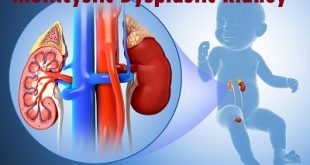Definition
Mesothelioma is the type of cancer that occurs in the layer of the tissue that covers the internal organs in the body. It mainly occurs in the lining of heart, lungs, and abdomen. But it usually forms in the lungs of those who have been exposed to this deadly toxin, but sometimes occurs in the abdominal area or the area around the heart. There are a number of therapies available that can help prolong survival and minimize symptoms and discomfort, but in most cases, the cancer is too aggressive and too advanced at the time of diagnosis to be cured. It is caused by Caused by asbestos, mesothelioma has no known cure and has a very poor prognosis.
History
- According to medical literature, the earliest mention of a tumor in the lining of the lungs (pleura) was made in 1767 by Joseph Lieutaud, the founder of pathologic anatomy in France
- In 1819, René-Théophile-Hyacinthe Laennec, the French physician who invented the stethoscope, suggested malignancy could arise from the pleura, based upon his understanding of the nature of pleural cells
- In 1843, Karl Freiherr von Rokitansky, professor of pathological anatomy at Vienna University challenged that notion, stating pleural cancer was always secondary to primary cancer elsewhere in the body
- In 1943, H.W. Wedler was the first to report a connection between asbestosis and cancer of the pleura among German asbestos workers
Epidemiology
International occurrence
The incidence of malignant mesothelioma is 0.9 cases per 100,000 persons annually. Marked variability exists in the incidence of malignant mesothelioma in different countries. In some countries, the incidence is low even though asbestos exposure is high. The reasons for these differences are not known.
Sex- and age-related demographics
Malignant mesothelioma is more common in men than in women, with a male-to-female ratio of 3:1.
Malignant mesothelioma has a peak incidence 35-45 years after asbestos exposure. Two-thirds of cases of malignant mesothelioma develop in the fifth to seventh decade of life.
Malignant mesothelioma also occurs in children; however, these cases are not thought to be associated with asbestos exposure.
Types
The mesothelioma is classified based on the area it originates.
Pleural Mesothelioma (Lungs)
Pleural mesothelioma develops in the lining of the lungs (known as the pleura). As the most common form of the disease, pleural mesothelioma accounts for approximately 80% of new cases.
Pleural mesothelioma is hard to diagnose. In the early stages of the disease, symptoms tend to be mild; while in later stages (stage 3 or stage 4) symptoms can worsen significantly. Unfortunately, since it is often diagnosed at a later stage, mesothelioma usually has a poor prognosis – most patients live less than 17 months from the time that their first symptoms appear
Pericardial Mesothelioma (Heart)
Pericardial mesothelioma, which originates in the lining of the heart cavity (the pericardium), is uncommon – accounting for less than 1% of all mesothelioma cases. As this rare cancer progresses, the heart becomes unable to deliver oxygen to the body, causing a further decline in health at an increasingly rapid rate.
The most common symptoms of pericardial mesothelioma mimic those of a heart attack, including pain in the chest and shortness of breath. In many cases, pericardial mesothelioma goes undiagnosed until an autopsy is performed.
Testicular Mesothelioma
Testicular mesothelioma is an extremely rare form of the disease, with fewer than 100 cases having been diagnosed around the world. Because there are so few incidents of this type of mesothelioma, little is understood about how it develops, and there is no standard course of treatment available.
Peritoneal Mesothelioma
Peritoneal mesothelioma originates in the lining of the abdomen. It often spreads to abdominal organs, including the liver, spleen, and bowel. Severe abdominal pain is the most common symptom, followed by discomfort caused by fluid buildup (abdominal effusion).
Although the prognosis for peritoneal mesothelioma is poor, it has improved somewhat in recent years, largely due to new treatments such as hyperthermic intraperitoneal chemotherapy (HIPEC). Outcomes vary from patient to patient, however, and survivorship typically depends on the individual’s situation and specific diagnostic factors.
On the basis of cell types:
Epithelial mesothelioma- It is the most prevalent type responsible for approximately 75% of diagnosed cases. The cells are uniform in shape with an elongated pattern. Epithelial mesotheliomas have the best outcomes.
Sarcomatoid mesothelioma– It is a less common type of mesothelioma and the cells are long, spindle-shaped, arranged in a haphazard way and grow out of supportive structures, such as bones and muscles.
Biphasic / Mixed mesothelioma– It consists of a mix of epithelial and sarcomatoid cell types.
Malignant Mesothelioma– Most forms of mesothelioma are malignant, making the disease, as a whole, very deadly.
Benign Mesothelioma– It is very rare and well-differentiated papillary mesothelioma (WDPM) is one of the examples of benign mesothelioma.
Risk factors
- Asbestos exposure
- Smoking
- Genetics
Causes of Mesothelioma
- Exposure to asbestos, a naturally occurring mineral once highly regarded for its insulation and fire-retardant properties, is still the overwhelming cause of mesothelioma.
- Approximately 75 percent of cases are men who were exposed to asbestos while serving in the military or working certain high-risk blue-collar jobs, including construction, firefighting, shipbuilding and industrial work.
- Second-hand exposure also occurs when washing the clothes of someone in a high-risk occupation and living near abandoned asbestos mines or areas where asbestos occurs naturally in the environment.
Common symptoms by types of mesothelioma
- Faint or harsh breathing
- A dry cough or wheezing
- Pleural effusions
- Coughing up blood
- Body aches
- Blood clotting disorders
- Chest pains
- Shortness of breath
- Reduced chest expansion
- Difficulty breathing
- Chest pains
- Heart palpitations
- Heart murmurs
- Fever or night sweats
- Fatigue
Symptoms of mesothelioma by their stages
Early stage
- A dry cough or wheezing
- Shortness of breath (dyspnea)
- Difficulty breathing
- Pain in chest or abdomen
- Pleural effusion (fluid)
Late stage
- Increased pain
- Anemia
- Weight loss
- Loss of appetite
- Respiratory complications
- Difficulty swallowing
Complications of Mesothelioma
- Accumulation of fluid in the chest (pleural effusion), which can compress the lung nearby and make breathing difficult
- Difficulty swallowing
- Chest pain
- Difficulty breathing
- Pain caused by pressure on the nerves and spinal cord
Complications that arise after the treatment
- The chemotherapeutic treatment causes a number of immediate side effects, like nausea, vomiting, hair loss, diarrhea, weight loss, fatigue, mouth sores, constipation, bruising and pain. Long-lasting complications include lung tissue, kidney damage, nerve damage, infertility, and heart problems.
- Radiation therapy can cause other types of cancer by damaging healthy cells and tissues.
- Any kind of surgery can lead to complications like bleeding, infections, blood clots, and damage to tissues. With surgery that targets the lungs, pleura, and chest cavity, there are risks of pneumonia, causing a fluid build-up in the chest, and even the loss of function in the lungs.
- Complications related to mental health such as lowered quality of life, social consequences, feeling lonely. All these can contribute to vulnerable actions such as anxiety and depression.
Diagnosis and test
The first action towards a mesothelioma diagnosis is recognizing the signs and symptoms of the disease, the level of risk and asbestos exposure, or both. Later the diagnostic procedures are utilized.
Imaging Scans
Imaging tests are used to locate tumors inside the body. One of the major techniques is an X-Ray. It can image the dense tissues in the lungs as well as in the whole body and helps to rule out pneumonia. A PET scan is an imaging technique that detects areas of the body with high metabolic activity, often characteristic of cancerous cells. A combination of two or more imaging tests is often used to be sure of tumor locations such as CT scan, MRI, and X-ray.
Blood Tests
Doctors use a variety of blood tests in order to determine if cancer is present in patients. Doctors can also analyze the type of cancer and what treatment options work best for each patient.
Biopsies
A biopsy is a tissue or fluid sample taken from a tumor or its surrounding area. These samples are examined under a microscope to determine cell type and are the only way to definitively diagnose mesothelioma. Depending on the location of cancerous cells the options of biopsy varies as follows.
- Fine-needle aspiration: A fine needle is inserted in through the chest or abdomen to remove a tiny piece of tissue, fluid or liquid from the affected lungs.
- Thoracoscopy: It is used to visualize inside the chest by a procedure called video-assisted thoracoscopic surgery (VATS). For this procedure, a small incision is made in between the ribs to insert a tube with a tiny video camera for visualization.
- Laparoscopy: It is used to remove a piece of tissue from the affected organ through a small incision into the abdomen with the help of a tiny camera.
- Thoracotomy: Thoracotomy is a surgery to open your chest between the ribs to allow a surgeon to check for signs of disease. A sample of tissue may be removed for testing.
- Laparotomy: A laparotomy is a surgical procedure involving a large incision through the abdominal wall to gain access into the abdominal cavity. It is also known as a celiotomy.
Treatment and medications
There are four types of standard treatment used for patients with malignant mesothelioma.
Surgery
- Wide local excision: It is a surgery to remove cancer and some of the healthy tissue around it.
- Pleurectomy and decortication: It is a surgery to remove part of the covering of the lungs and lining of the chest and part of the outside surface of the lungs.
- Extrapleural pneumonectomy: It is a surgery to remove one whole lung and part of the lining of the chest, the diaphragm, and the lining of the sac around the heart.
- Pleurodesis: It is a surgical procedure which makes a scar in between the layers of the pleura by using chemicals and drugs. Initially, the fluid from the space is drained using a catheter tube and then the chemical or drug is injected into space. In such a way the fluid build-up from the pleural cavity is stopped.
Radiation therapy
Usually, radiation therapy involves the exposure of high energy of X-ray beam and other types of radiations are used to kill the cancerous cells. There are two types of radiation therapy:
- External radiation therapy uses a machine outside the body to send radiation toward cancer.
- Internal radiation therapy uses a radioactive substance sealed in needles, seeds, wires, or catheters that are placed directly into or near cancer.
Chemotherapy
Chemotherapy is a cancer treatment that uses drugs to stop the growth of cancer cells, either by killing the cells or by stopping them from dividing.
- Systemic chemotherapy: When chemotherapy is taken by mouth or injected into a vein or muscle, the drugs enter the bloodstream and can reach cancer cells throughout the body.
- Regional chemotherapy: When chemotherapy is placed directly into the cerebrospinal fluid, an organ, or a body cavity such as the chest or peritoneum, the drugs mainly affect cancer cells in those areas. Combination chemotherapy is the use of more than one anticancer drug.
- Hyperthermic intraperitoneal chemotherapy: It is used in the treatment of mesothelioma that has spread to the peritoneum (tissue that lines the abdomen and covers most of the organs in the abdomen). After the surgeon removes all cancer that can be seen, a solution containing anticancer drugs is heated and pumped into and out of the abdomen to kill cancer cells that remain. Heating the anticancer drugs may kill more cancer cells.
Targeted therapy
Targeted therapy is a type of treatment that uses drugs or other substances to attack specific cancer cells.
- Monoclonal antibody therapy: It is a type of targeted therapy that uses antibodies made in the laboratory, from a single type of immune system cell. These antibodies can identify substances on cancer cells or normal substances that may help cancer cells grow. The antibodies attach to the substances and kill the cancer cells, block their growth, or keep them from spreading.
- Kinase inhibitors: These are a type of targeted therapy being studied in the treatment of malignant mesothelioma. Kinase inhibitors are targeted therapy drugs that block signals needed for tumors to grow.
Biologic therapy
Biologic therapy is a treatment that uses the patient’s immune system to fight cancer. Substances made by the body or made in a laboratory are used to boost, direct, or restore the body’s natural defenses against cancer. This type of cancer treatment is also called biotherapy or immunotherapy.
Prevention of Mesothelioma
- Perform air monitoring and keep records
- Complete regular assessments of asbestos risks
- Communicate asbestos hazards to workers
- Use proper work practices and controls to limit exposures
- Offer respiratory protection if exposure limits are exceeded
- Provide asbestos awareness training
- Provide medical surveillance to workers exposed to asbestos
 Diseases Treatments Dictionary This is complete solution to read all diseases treatments Which covers Prevention, Causes, Symptoms, Medical Terms, Drugs, Prescription, Natural Remedies with cures and Treatments. Most of the common diseases were listed in names, split with categories.
Diseases Treatments Dictionary This is complete solution to read all diseases treatments Which covers Prevention, Causes, Symptoms, Medical Terms, Drugs, Prescription, Natural Remedies with cures and Treatments. Most of the common diseases were listed in names, split with categories.








can’t find Pneumothorax
very soon we will update pneumothorax. thank you.
hlo sir / mam.i have also not found one more very common problem “Constipation ” .. please add this ..
it is so good apps
please add more types of diseases b’se this apps is so good to me
yeah, sure we will add. keep reading our app.
This article about that cancer is informative for a person with Dyspnea and she was turned away from several doctors with no medication. Sometime it was not serious.
what are the drugs of cancer
The drugs may vary based on the type of cancer. It is better to consult a doctor before taking drugs.